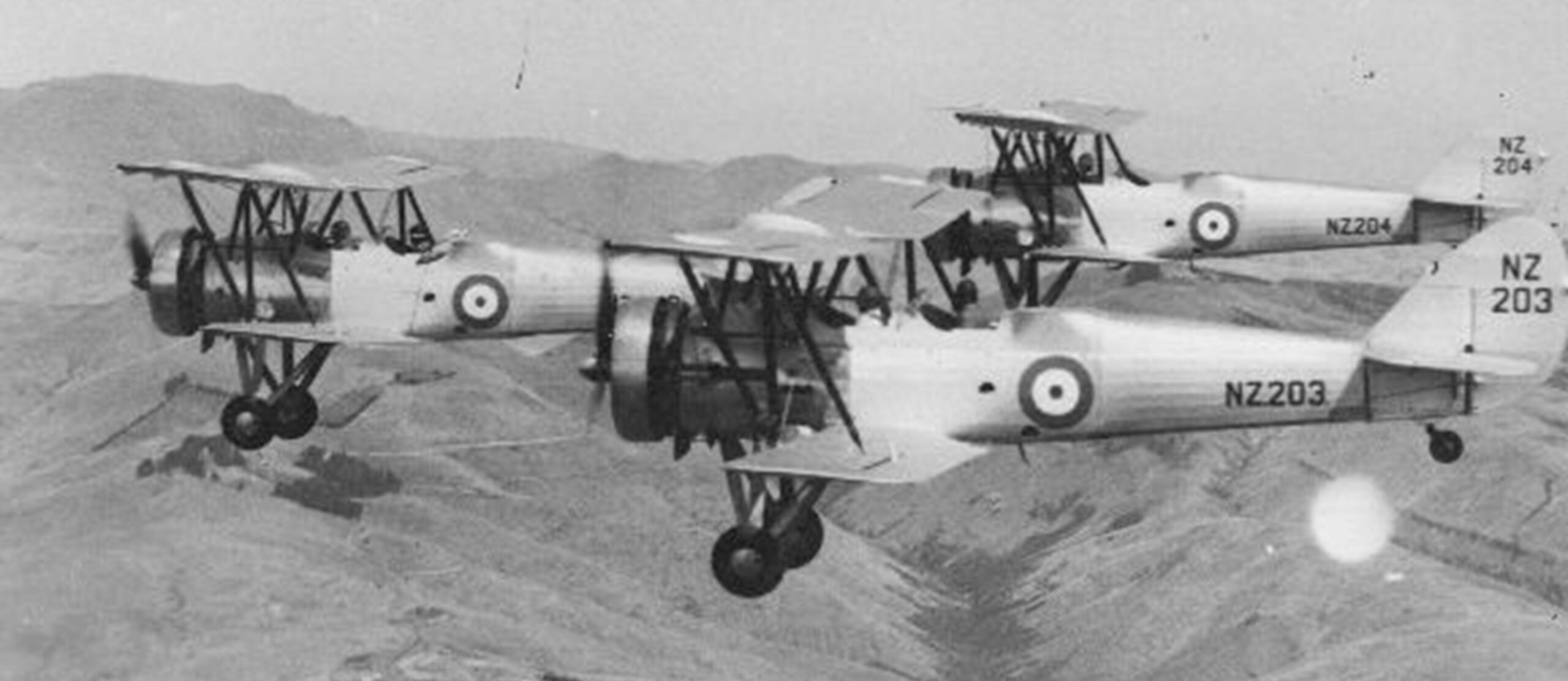Stories
Stories
Britain calls for New Zealand Aircrew

Three RNZAF Avro 626s in formation over the Port Hills, near Christchurch, 1936
(Credit: The Air Force Museum of New Zealand)
From the formation of the Royal New Zealand Air Force, young men had been trained as officers at Wigram and posted for short stints to the RAF. As the Second World War loomed, the New Zealand government offered more airmen to the RAF.
When war was declared, the RNZAF was mobilised, and volunteers were called for to serve in either the RNZAF or the RAF for as long as the war lasted. By this time there were already more than five hundred New Zealanders serving in the RAF. Of these, around two hundred were in the UK, with others posted in India and the Middle East. Around 135 New Zealand pilots fought during Battle of Britain from the 10th of July to 31st October 1940.
This was just the beginning of New Zealand’s contribution to the RAF. With strategy shifting from one of defence to taking the attack to the Nazis, RAF planners estimated that for each year of the war they would need around 20,000 pilots and 30,000 other crew.
These numbers could not be resourced from Britain alone. At the same time the United Kingdom was considered an unsuitable location for air training, due to the possibility of enemy attack, the strain caused by wartime traffic at airfields and the unpredictable weather. So, negotiations began for the Empire Air Training Scheme (EATS), a plan based on using facilities in the Dominions, as they were then known, to train aircrews from Canada, Australia, and New Zealand.
Under the agreement, air crews received elementary training in various Commonwealth countries before travelling to Canada for advanced courses. Training costs were to be divided between the four governments.
Article XV of the agreement stipulated those graduates belonging to Dominion air forces, if they were assigned to service with the RAF, should be placed in new squadrons identified with the RAAF, RCAF and RNZAF. However, in practice most personnel from other Commonwealth countries, while they were under RAF operational control, were assigned to British squadrons, such was the demand for aircrews.
The New Zealand government initially committed itself to providing the RAF with 880 fully trained pilots a year. This number later increased to two thousand per annum. Pilots had their first flying lessons at bases throughout the country, including Whenuapai, Palmerston North, Harewood, Wigram and Taieri. In all, more than 2700 pilots completed their training in New Zealand before heading for England and the RAF.
From April 1940, thousands more New Zealanders sailed for Canada as part of EATS. New Zealanders trained in Canada as pilots, navigators, wireless operators, air gunners and bomb aimers. EATS remains one of the single largest aviation training programs in history and was responsible for training nearly half the aircrews who served with the RAF and aligned air forces.